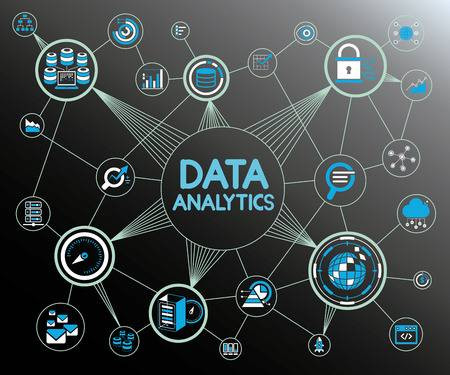Course Overview:
Embark on a transforming journey with our Oil & Gas Analytics course, which covers vital topics that
combine theoretical expertise with practical applications. Learn the essentials of SQL design
specifically for the industry, from syntax to advanced queries and using Power BI to explore data
dynamically, visualize it, and conduct in-depth multi-well analyses. Explore drilling data with Tableau
while learning dimensional modelling and various visualizations. Improve your geospatial analysis
skills by using Tableau to visualize well and location performance. This course is ideal for experts and
new learners looking for a comprehensive skill set in oil and gas analytics. It combines practical
methodologies with industry-relevant applications to provide unrivalled competency.
Learning objectives:
1. Learn SQL Basics for Oil & Gas:
• Introduction to SQL and its specific application in the Oil & Gas industry.
2. Effective Querying Techniques:
• Master SQL syntax and structure for optimal data retrieval and filtering.
3. Can able to do Advanced Data Manipulation in Oilfields:
• Utilize aggregate functions (SUM, AVG, COUNT, MAX, MIN) and window functions for
analytical queries.
• Handle null values, duplicates, and execute case statements in oilfield data.
4. Power BI Proficiency:
• Connect Power BI to SQL databases for dynamic data exploration.
• Implement Power Query for data preparation, transformation, and dynamic filtering.
• Calculate key metrics with DAX for insightful analysis.
5. Make production dashboards in Power BI:
• Design real-time production dashboards, integrating Python and AI tools for advanced
analytics.
6. Tableau for Drilling Data Visualization:
• Connect Tableau to SQL databases, navigate data preparation, and employ dimensional
modeling.
• Visualize real-time drilling data using various chart types.
7. Geospatial Analysis with Tableau:
• Leverage Tableau for oilfield geospatial analysis, utilizing maps and filled maps for
location-specific insights.
Prerequisites:
Prerequisites for new learners include a strong interest in oil and gas operations, a willingness to
master SQL foundations, and a desire to experiment with data analysis tools such as Microsoft Power
BI and Tableau. No prior expertise is required, making this course suitable for beginners with an
interest in the sector and a desire to explore data analytics.
Duration: 20+ hours
Topics to be covered:
1. Introduction to SQL
- Introduction to SQL and its application in the Oil And Gas.
- Setting up SQL environments for Oil and Gas Analytics
- Introduction to SQL syntax and Query structure
- Retrieving and Filtering data with SELECT and WHERE in statements.
- Sorting and Grouping data with ORDER BY and GROUP BY
2. Oilfield Data Wrangling, Aggregation and Operations in SQL
- Working with aggregate functions (SUM, AVG, COUNT, MAX, MIN etc.)
- Understanding window functions for analytical queries
- Utilizing data and time functions in SQL for production data analysis
- Handling null values and duplicates in oilfield data with Case statements
- Performing joins in oilfield data tables
3. Data Exploration, Transformation, and Analysis with Power BI
- Connect PowerBI to SQL Databases
- Data preparation and transformation using Power Query
- Exploring relationships between field variables
- Visualizing production trends over time with line and area charts
- Dynamic filtering for complex production data
- Calculating key metrics with DAX
- Comparing production rates, evaluating performance, and allocation
- Introduction to multi-well visualizations and Interactive features for analysis
4. Production Dashboards, Reporting, and Further insights
- Utilizing visuals, gauges, and scorecards for real-time KPI tracking
- Integrating Python for further analytics
- Incorporating AI tools in Power BI for enhanced insights
- Identifying Production anomalies and investigating potential causes
- Visualizing rate allocation among different wells and zones
- Displaying contribution of each well or zone through data tables
- Designing real-time Interactive production monitoring dashboards
5. Drilling Data Exploration and Visualization with Tableau
- Connecting Tableau to SQL Databases
- Data preparation in Tableau & Dimensional Modeling
- Filters, data blending and cross joins
- Measures and dimensions in Tableau
- Level of Details and Table Calculations in Tableau
- Visualizing real time drilling data in tableau
- Analyzing drilling performance with bar charts, scatterplots, composite plots, and pie charts etc. in Tableau
6. Oilfield Geospatial Analysis and Field Performance Reports with Tableau
- Using Maps and Filled Maps in Tableau
- Visualizing performance by wells and by locations
- Well performance clustering
- Creating dynamic field report dashboards in Tableau


